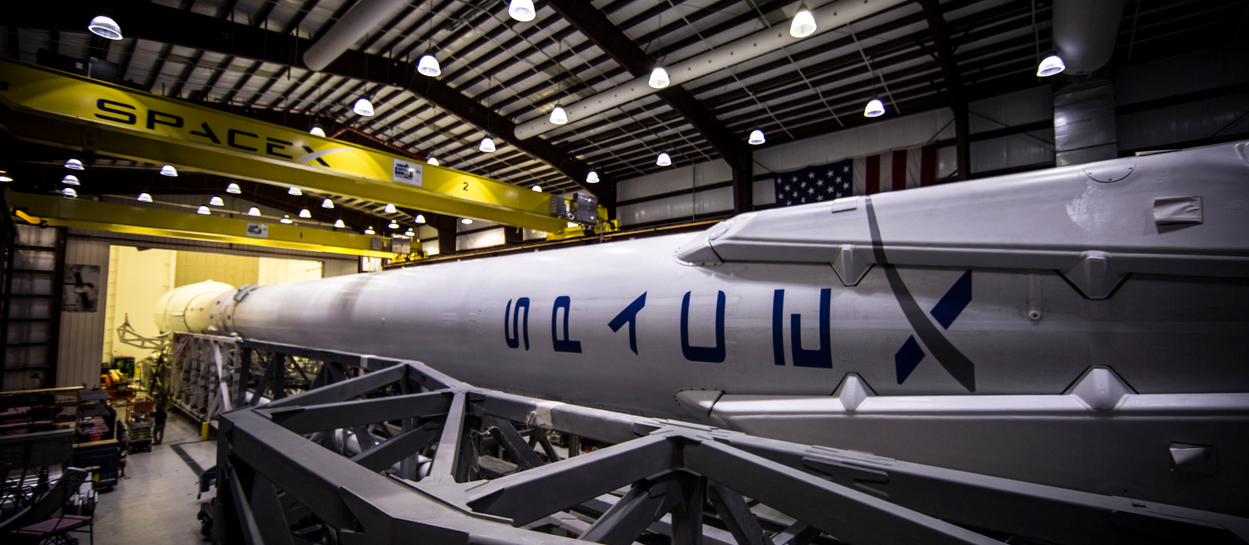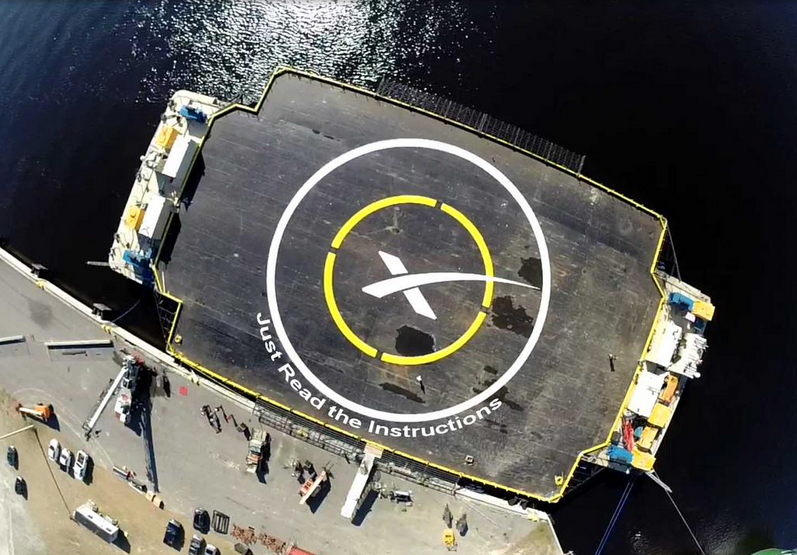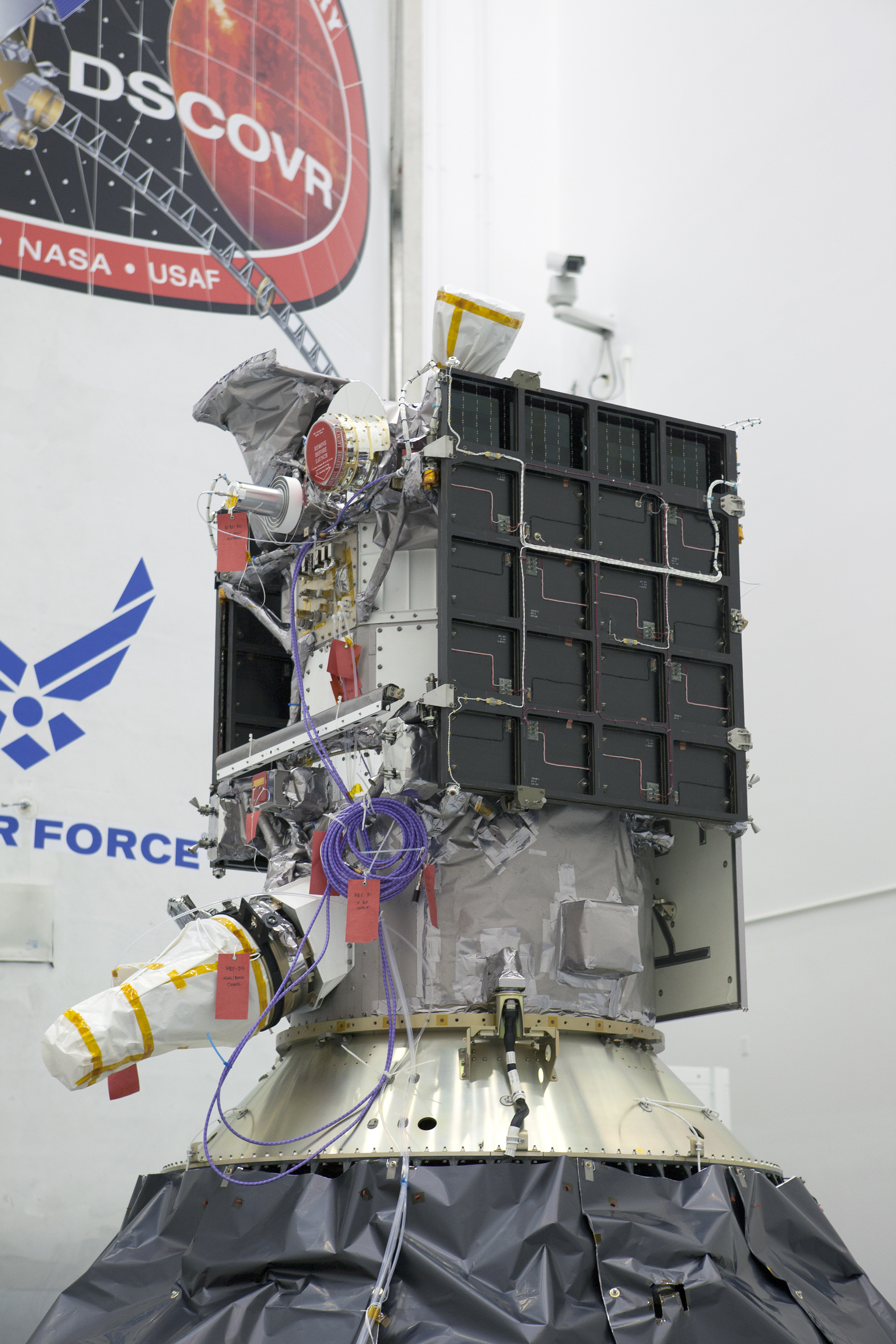SpaceX to Launch Space Weather Satellite, Try Rocket Landing: Watch Live

The private spaceflight company SpaceX will attempt the ultimate space double-header today (Feb. 8) with the launch of a space weather observatory followed by an ambitious rocket landing attempt on a floating platform in the Atlantic Ocean.
A SpaceX Falcon 9 rocket will launch the Deep Space Climate Observatory (DSCOVR) into orbit from Florida's Cape Canaveral Air Force Station at 6:10 p.m. EST (2310 GMT). You can watch the SpaceX rocket launch live online beginning at 3:30 p.m. EST (2030 GMT), courtesy of NASA TV.
If all goes well, once the launch is complete SpaceX's Falcon 9 rocket will attempt to land on "Just Follow the Instructions" — an autonomous spaceport drone ship parked about 370 miles (595 kilometers off the Florida coast. It is the second time that SpaceX is attempting to land a Falcon 9 rocket first stage on the drone ship. A Jan. 10 attempt ended with the booster landing hard, smashing into the landing platform and exploding. SpaceX CEO and founder Elon Musk said that try was "Close, but no cigar."
"We ran out of hydraulic fluid shortly after the landing burn started, so it was close," Hans Koenigsmann, SpaceX's vice president for mission assurance, told reporters on Saturday of the January attempt. "I feel like last time was really an enormous accomplishment."
This time, SpaceX hopes to do better, but Koenigsmann still put the chances of success for the novel test at just 50 percent.
The 14-story Falcon 9 rocket first stage has been loaded with 50 percent more hydraulic fluid for the four grid steering fins that control the booster during its hypersonic atmospheric re-entry. But the rocket will also be coming in twice as fast and landing further offshore than the one used in the Jan. 10 landing attempt due to the nature of the DSCOVR mission, Koenigsmann added.
"We hope it will go well this time," he said.
Breaking space news, the latest updates on rocket launches, skywatching events and more!
While SpaceX has been pursing rocket landing and reusability technology in the hopes of lowering to costs of spaceflight, Koenigsmann stressed that today's landing attempt is not the company's main objective. Successfully sending the DSCOVR space weather satellite into orbit is the primary mission.
DSCOVR's space weather mission
For the DSCOVR satellite, today's launch will cap 17 years of development, setbacks and ultimately resurrection. The refrigerator-sized space weather observatory's mission — which aims to serve as an early-warning system for major solar storms — is a joint effort NASA, the National Oceanic and Atmospheric Administration and the U.S. Air Force.
The origins of DSCOVR date back to 1998, when the mission (then called Triana) was spearheaded by then-Vice President Al Gore to beam live views of the Earth from space for scientific research and educational inspiration. But in 2001, after political disputes over the mission and a change in presidential administrations, the mission was mothballed and the Triana satellite (already completed) packed away in storage.
NASA, NOAA and the U.S. Air Force resurrected the mission in 2009 to serve as a space weather early-warning outpost nearly 1 million miles in deep space at a waypoint between the Earth and sun known as Lagrange point 1. The total cost of the DSCOVR mission, including the earlier work on Triana, is about $340 million, with the planned two-year run of just DSCOVR expected to account for $104.8 million of that budget.
DSCOVR will serve as a partner to NASA's long-lived Advanced Composition Explorer (ACE), a satellite that has been performing a similar mission in the same region since 1997.
"DSCOVR will serve as our tsunami buoy in deep space," Tom Berger, the director of NOAA's Space Weather Prediction Center in Boulder, Colorado, said in a press conference Saturday.
Severe solar flares and sun storms known as coronal mass ejections can interfere with aviation services, satellite navigation and even power grids on Earth, space weather scientists said.
"We are dependent upon a reliable source of early-warning and advance notice," added Stephen Volz, assistant administrator of the NOAA Satellite and Information Service in Silver Spring, Maryland.
In addition to studying the sun, DSCOVR will also fulfill part of its initial design by observing the Earth from Lagrange 1 and beaming back a steady stream of images of our home planet from space. The spacecraft should take a photo of Earth ever two hours, with the images expected to be available to scientists and the next day.
"They'll be posted on a website for the public to see," said Steven Clarke, director of NASA's Joint Agency Satellite Division. "I think it will be an inspiration for people to see the sunlit disk of the Earth."
The DSCOVR spacecraft is expected to last at least two years working alongside ACE, and could potentially last longer depending on its fuel supply, NOAA officials said.
Email Tariq Malik at tmalik@space.com or follow him @tariqjmalik and Google+. Follow us @Spacedotcom, Facebook and Google+. Original article on Space.com.
Join our Space Forums to keep talking space on the latest missions, night sky and more! And if you have a news tip, correction or comment, let us know at: community@space.com.

Tariq is the award-winning Editor-in-Chief of Space.com and joined the team in 2001. He covers human spaceflight, as well as skywatching and entertainment. He became Space.com's Editor-in-Chief in 2019. Before joining Space.com, Tariq was a staff reporter for The Los Angeles Times covering education and city beats in La Habra, Fullerton and Huntington Beach. He's a recipient of the 2022 Harry Kolcum Award for excellence in space reporting and the 2025 Space Pioneer Award from the National Space Society. He is an Eagle Scout and Space Camp alum with journalism degrees from the USC and NYU. You can find Tariq at Space.com and as the co-host to the This Week In Space podcast on the TWiT network. To see his latest project, you can follow Tariq on Twitter @tariqjmalik.


